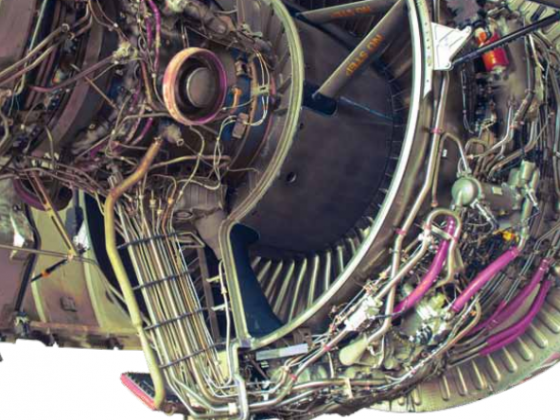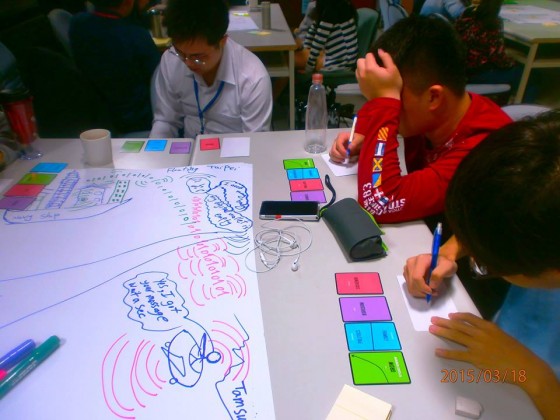by | Datuk Ir. Kamarulzaman Zainal, Senior Vice President, Industry Intelligence Malaysian Industry Government Group for High Technology (MIGHT)
National Aerospace Industry: how it’s started and where it’s headed to?
The first National Aerospace Industry Blueprint which was launched in 1997, have provided us a foundation to be a serious player in the aerospace industry since the past 17 years.
The first National Aerospace Industry Blueprint which was launched in 1997, have provided us a foundation to be a serious player in the aerospace industry since the past 17 years. Through continuous efforts from multiple players and stakeholders, we have achieved significant percentage of what lies in the blueprint. Along with the rapidly growing industry, we already left the infant phase and are now ready to dwell into more complex and sophisticated activities. We should focus and invest more in technology related activities and application of science in the industry instead of just on revenue generating activities.
80% of the recommendations in the previous Blueprint was successfully implemented due to its suitability. However, the remaining 20% are not pursued due to reasons such as unsuitable or irrelevant to the then industry, the recommendation was not supported by the decision makers; and lack of appropriateness due to some concerns and issues faced by the industry.
Generally, our main target to be a regional player in aerospace industry is achieved, although the percentage of implementation of each recommendations may vary from one to another. Among the achievements are including the success of bringing in renowned players such as Airbus, Spirit Aero systems and Honeywell to do their business and investment here in Malaysia. There are also local companies that are recognized and actively involved in the global supply chain as a result of foreign investment. As of today, the industry has contributed RM11.2 billion to the country’s GDP.
We added some new flavours in the new blueprint in terms of the activities and scope of work which created a paradigm shift for Malaysian aerospace ecosystem: we now need to be more focused and selective. We want to add value to the current activities by involving in the early phases of aircraft life cycle and looking in depth on the technicalities, emphasis should be given to the revenue and number of high income employment to be created by 2030, engineering and design services as the new areas of opportunities for the white collars professionals to venture in.
In general, the Blueprint 2030 aim to triple the industry’s sub sectors size and close monitoring will be given on the implementation plan to ensure the industry is on track and synchronized with the action plan time frame. We highlighted again the importance of establishing a dedicated entity to coordinate the overall implementation plan and monitor the development of the industry. This specific body will act as the secretariat and will be reporting to the Malaysian Aerospace Council (MAC) who is responsible to steer the aerospace industry in Malaysia. Perhaps, MIGHT could expand its role after this.
As the industry matures, there is a tendency for the government to no longer intervene. How do you see this fame or shame to the industry?
In Malaysia, government intervention is required for strategic industry such as aerospace. Therefore, to reduce the burden to the government, establishment of the earlier mentioned entity will assist to provide effective coordination works of implementation of the recommendations as well as positioning the private sectors and businesses in a wholesome manner. This new business approach will be able to enhance the industry power, and poise it as one big smart partnership team where everyone can share the big cake.
Markedly, the government will intervene and control on the future and policy direction in critical areas such as award of contracts in government purchases and offset management. We need to ensure that our local players are growing and advancing further, but at the same time we still require smooth operation in dealing with the B to G and G to G business with foreign and more advanced companies. These kind of decisions will provide balance to the industry to remain competitive in the long run.
Positioning Malaysia at the global Arena
The Malaysian aerospace industry has a lot of potential; we need to have a different mindset and attitudes; both the end clients as well as the service providers. The locals or end users have to trust and support local innovation. Past records showed that the end users, be it the military or commercial sectors, have preferences towards foreign solutions and products. We have little trust on our local capability and this should change!
Let’s learn from the UAV case back in 2007, when the government put faith in consortium of three companies – CTRM, Ikramatik and Sys Consultancy Service (SCS), to produce national UAVs. The products were deployed, on operational basis with the aim to undertake surveillance task to curb the infiltration of illegal immigrants from neighbouring countries into Sabah. Providing that kind of chance to the local products, not only to assist and cater niche area in defense and enforcement activities, but also to act as a platform to prove the capability of the local products and solutions. Once we have trust from our own users on our own indigenously developed technologies, products and solutions; the route to global market should be easier. After all, taking more risk is a challenge to any high technology industry.
Many did not realise that we are exporting significant local talents to Singapore and the Middle East. Global community have recognised our talents and professionals, and human capital development is no issue for the aerospace industry in Malaysia.
With the new generation aircraft to come, we should be in position to participate and invest in potential international aircraft programmes to secure incoming business. We have done it once through the purchase of A400M transport aircraft for the military. We played an important role as a programme partner with Airbus in producing certain parts of the aircraft, and it took almost 10 years since the launching of the programme until the fist A400M being produced.
Through investment, sharing risk with OEMs and, participate in new programmes – will secure us a spot and ensure continuous incoming lucrative businesses. Bear in mind that the cycle might be as long as 50 years, that surely will secure employability for half generation of workforces!.
The Future
Tripling the revenue generated will not promise to triple the number of employment in the industry. Is it a threat? Well, in the future, level of complexity and sophistication of works will cause introduction and familiarisation of automation and reducing demand for manual labours. On the other hand, there will be more opportunities for players to become more competitive and strategic in terms of cost, quality and delivery. The future landscape is expected to attract more engineering and design services, manufacturing activities and inviting more airlines to Malaysia for MRO. The future will be exciting for the youth and young people to be part of this industry.
To be a global player is not an overnight process. We make mistakes and learn from it, we take risk by investing in it. We might lose the bet. Economically we might lose but we gain new experiences, new lessons. The previous Blueprint have brought us where we are now, and the next 15 years will definitely be much more challenging









